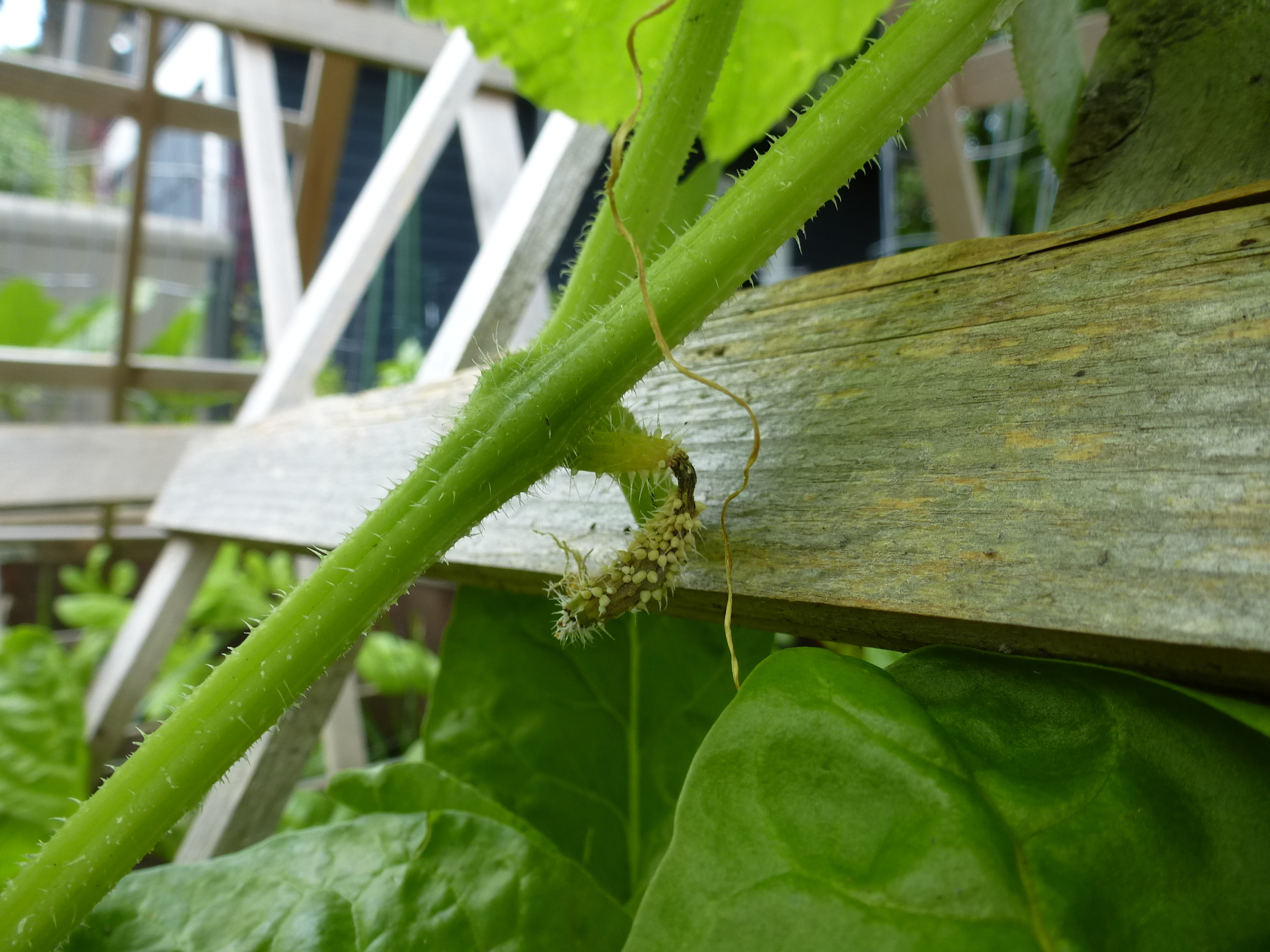Hand-Pollinating Squash & Cucumbers
It's summer! You know what that means - it's time for the bounty to start flowing in. Zucchini, yellow squash, cucumbers...... But wait, why didn't that zucchini ever grow? Why weren't there any seeds in my little yellow squash? What are those tiny little brown dangly things hanging off my cucumber vine? Those mysterious and disappointing creatures are likely female fruit whose flowers didn't get pollinated. Yes, my friends, it's time we had "The Talk." The talk about..........plant sex. Don't worry, it won't be as uncomfortable as the sex-ed class taught by your high school gym teacher…
Cucumber that didn't pollinate
Cucumber that did pollinate
I'd like to talk specifically about those in the "Cucurbitaceae" family, also called "Cucurbits." These include plants like zucchini and other squash, melons, and cucumbers. Unlike other plants that self-pollinate in a single flower, like tomatoes, cucurbits require two different flowers to pollinate - a male and a female, and both flowers can grow on the same plant. These are sometimes referred to as "perfect" and "imperfect" flowers, respectively.
Male zucchini flower
Female zucchini flower
Let's take zucchini as an example for our little talk. When flowers start to appear, they tend to be male. (In fact, this is by nature's design to ensure there's plenty of pollen around when the ladies decide to show up.) Male flowers have skinny green stems and look nice, but they never turn into zucchini as females do. Male stems are distinctly different than the stems of female flowers. The females really look like what you're trying to produce. They just look like "mini" versions of squash or cucumber. (These are technically called "ovaries" but now we're starting to tread on high school "health class" territory, so I'll just leave it at that.) They'll look this way even before pollination, which can be deceiving...You think you're well on your way because you see the fruit and then nothing ever develops. The other difference is what's on the inside of the flower. The male anatomy includes a "stamen” which contains the anther that produces the pollen. Females have a "pistil” that includes the “stigma," which is what gets pollinated when the male pollen reaches it.
Male Stamen
Female Pistil
Most of the time, nature takes care of this process, particularly if your garden encourages a lot of pollinators like bees and butterflies. Even a nice wind can take care of this process. But, female flowers only open for a single day, and a lot of times pollination doesn't occur. That's where you can help. You can "hand-pollinate" the flowers.
TIP: Female flowers are only open for a day. Pollinate in the morning when the female flower is open the widest.
Pollinating the flowers by hand simply means that you make sure pollen gets to where it needs to go. You can do this by taking the male flower off the stem and peeling back the petals to be able to rub the anther on the stigma. You can also do this with a small paintbrush (not the painting-the-living-room kind, but the smaller paint-by-numbers kind) or even a cotton swab will do.
Step 1: Get the pollen from the male flower.
Step 2: Gather the pollen onto the delivery vehicle.
Step 3: Rub pollen on stigma of female flower
And that's it. If you're having pollination problems or are concerned about your flowers not pollinating, you can do it yourself. Good luck!
Female Yellow Squash















